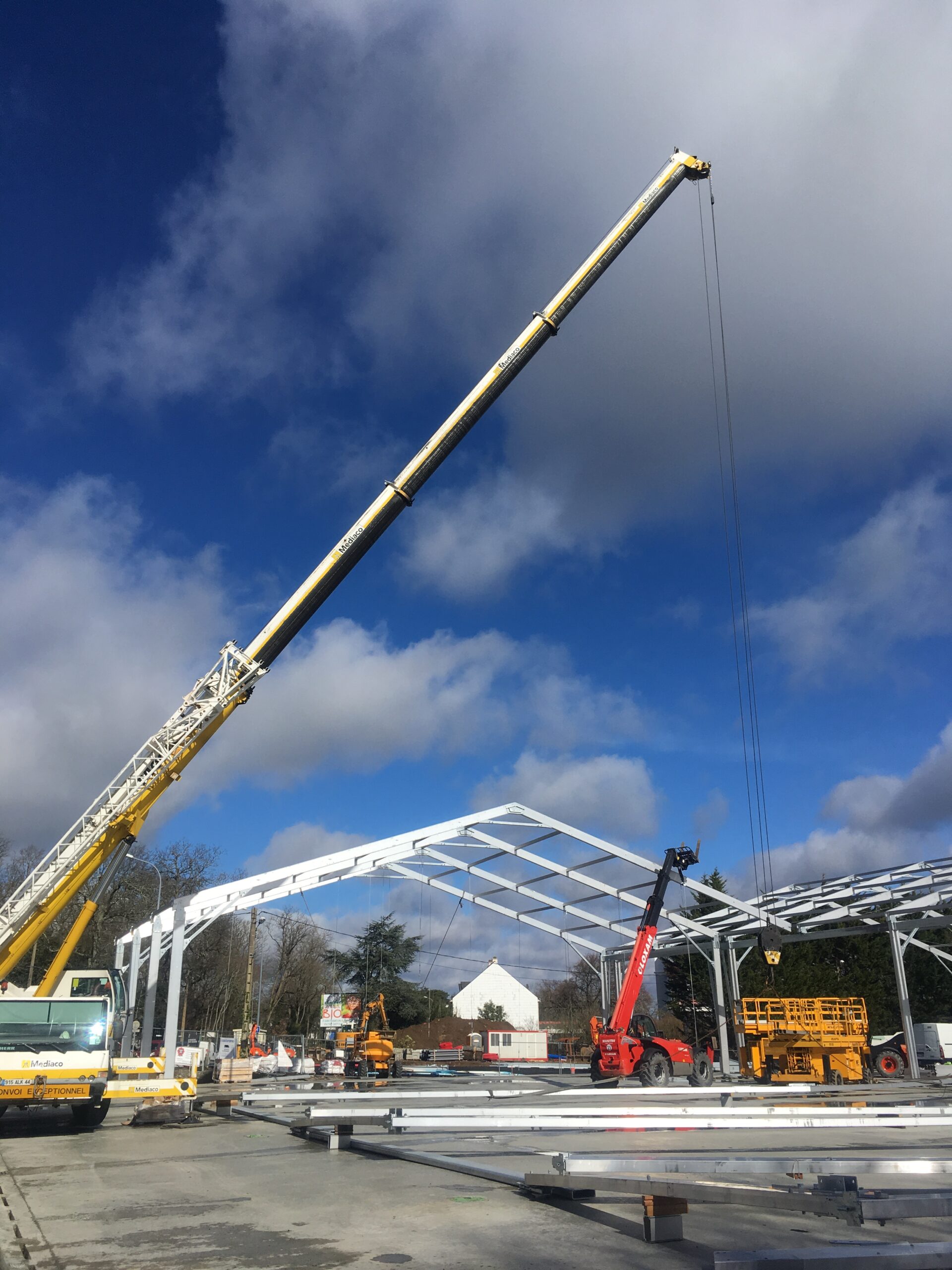Before a temporary or semi-permanent structure can be installed, the site itself needs to be ready to receive it. The quality of your groundworks will directly affect the speed, efficiency, and success of the build. At Lauralu, we help clients plan this stage so that installation runs smoothly and the structure performs at its best from day one.
If you’re considering a project, our team can assess your site and guide you through the right preparation steps for your needs.
Why Groundworks Matter
Ground preparation sets the foundation – literally – for the success of your structure. A level, stable base ensures the building’s frame is secure, doors and openings function correctly, and water drainage is properly managed. Poor preparation can lead to costly adjustments, delays in installation, and long-term issues with the structure’s performance.
For many projects, the required preparation will depend on the type of structure, the ground conditions, and the intended use. That’s why Lauralu’s first step is always to assess your site and discuss your operational needs.
Read More: Weather-Resistant Buildings: The Key To Year-Round Operations
Understanding the Scope of Work
Groundworks can range from straightforward surface levelling to more complex engineering tasks.
Common considerations include:
- Levelling and grading – Ensuring the ground is even is essential for stability. This may involve removing high points, filling low areas, or compacting the soil.
- Drainage solutions – Surface water must be directed away from the structure to prevent pooling or flooding. This can require installing drains, channels, or gravel beds.
- Access routes – Clear, stable access is needed for installation equipment and future deliveries or operations.
- Service connections – If your building requires utilities such as electricity, water, or data cabling, it’s important to plan these before installation.
The scope of work will vary depending on whether the structure is being placed on an existing surface, such as concrete or tarmac, or on undeveloped ground.
Working with Existing Surfaces
If your site already has a solid surface in place, preparation may be minimal. A detailed inspection will confirm whether the surface is level, stable, and free from cracks or weaknesses. In some cases, repairs or reinforcement might be necessary to support the structure’s load.
For installations on concrete or tarmac, anchor fixings can often be secured directly into the surface, reducing the need for extensive additional works.
Preparing Unpaved or Uneven Ground
For sites without an existing hard surface, preparation will be more involved and this can be very dependent on the soil type, location, and intended use of the building.
- Removing vegetation or debris.
- Laying a compacted hardcore base to create a stable platform.
- Installing concrete pads, strips, or a full slab where required.
This stage is critical for ensuring the structure remains stable, especially in high-traffic or heavy-load environments.
Considering Site Constraints
Each site brings its own set of challenges – from limited access routes to proximity to other buildings. Lauralu takes these factors into account when advising on preparation. For example, in built-up areas, careful planning may be required to ensure machinery can operate safely without disrupting ongoing operations.
Environmental considerations may also influence preparation. Sites in flood-prone areas may need raised foundations or additional drainage measures, while those on sloping terrain could require retaining structures or terracing.
Timescales and Sequencing
Groundworks should be scheduled in advance to ensure it’s complete before the installation team arrives. In many cases, we work alongside clients’ contractors or recommend trusted partners to carry out the necessary works.
Typical sequencing involves:
- Site survey
Done to assess conditions and finalise requirements.
- Ground preparation
Undertaken by the client’s chosen contractor.
- Final inspection
This ensures the base meets agreed specifications.
- Structure installation
Carried out by the Lauralu team.
Clear communication at each stage helps avoid unexpected delays.
More questions? Check our in-depth Frequently Asked Questions section.
Planning for the Future
Good preparation not only supports the installation process but also extends the lifespan of your structure. Proper drainage reduces maintenance needs, while a well-constructed base allows for potential reconfiguration or relocation in the future.
When planning, it’s worth considering the long-term use of the site – for example, whether the base could support a different type of structure later, or be repurposed for other operations.
Speak to Lauralu About Your Project
Every site has different requirements, and the best way to ensure your groundworks are fit for purpose is to plan them with expert input from the start. By involving Lauralu early in the process, you’ll have the confidence that your site is ready for a safe, efficient, and cost-effective installation.
Get in touch with Lauralu today to arrange a site assessment and find out exactly how to prepare your ground for your new structure.
Like what you see?
Let’s build something together
Get in touch
Contact us at Lauralu for more information or advice regarding temporary buildings.
We can provide you with a free fast estimate or advice on temporary buildings.
